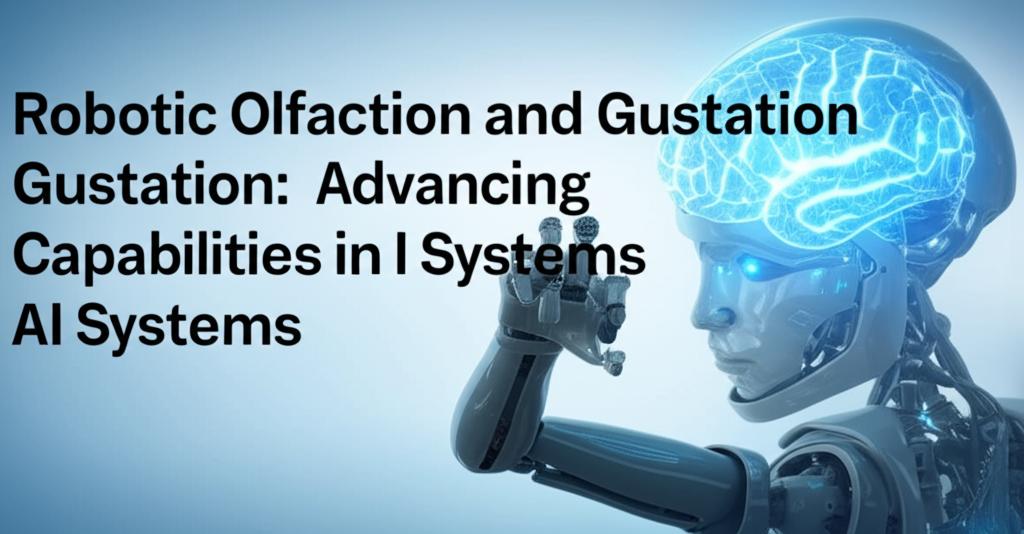The quest to imbue artificial intelligence (AI) systems with senses analogous to human smell and taste is rapidly advancing, opening up new frontiers in robotics. Integrating digital olfaction and gustation into AI platforms allows machines to perceive and interact with their environments in more nuanced ways, much like humans do. This technology is poised to revolutionize a multitude of sectors, from industrial safety and environmental monitoring to healthcare and food quality control.
Recent breakthroughs include the development of biomimetic olfactory chips (BOCs) that can house thousands of gas sensors on a single, compact chip. These chips mimic the biological olfactory system and, when combined with AI algorithms, can detect and distinguish a wide variety of odors, even in complex mixtures. This capability is a significant step up from traditional electronic noses (e-noses), which have often been hampered by bulky equipment and limitations in recognizing complex scent profiles. Researchers have demonstrated the potential of these advanced olfactory chips by integrating them with vision sensors on a robot dog, enabling it to identify objects in blind boxes through a combination of sight and smell.
Similarly, electronic tongues (e-tongues) are evolving. Scientists are working on creating arrays of graphene devices to mimic the thousands of taste receptors on the human tongue, allowing for the distinction of subtle taste differences. The goal is to develop AI systems with "gustatory emotional intelligence," which could lead to applications like AI-curated diets based on emotional intelligence for weight loss or personalized meal offerings in restaurants. Future aspirations include integrating these gustatory systems into a single chip and eventually combining them with other senses like vision, audio, and touch to create more advanced AI.
The applications for robotic olfaction and gustation are vast and varied. In industrial settings, robots equipped with a sense of smell can detect gas leaks, identify toxic chemicals, and monitor equipment for early signs of failure, thereby enhancing workplace safety and efficiency. This is particularly relevant in industries like semiconductor manufacturing, where identifying volatile organic compounds (VOCs) with high accuracy is crucial. Companies like Ainos Inc. are collaborating with robotics firms such as ugo Inc. to integrate "AI Nose" technology into autonomous robots. These smell-enabled robots are being developed for use in security patrols, building inspections, and data centers, particularly addressing labor shortages in these sectors.
In healthcare, robotic olfaction could lead to early disease detection through the analysis of VOCs in a patient's breath or a hospital environment. Such systems could also monitor hygiene in hospitals and elderly care facilities, potentially identifying infections or other health risks sooner. For food quality control, e-noses and e-tongues can detect spoilage, ensure food safety, and even help in authenticating products by analyzing their chemical composition.
Environmental monitoring is another key area. Robots with olfactory capabilities could provide continuous air quality assessments, detect pollutants, and support smart city initiatives. Drones equipped with olfaction sensors are being explored for environmental odor monitoring, though challenges in real-time data collection and calibration model maintenance remain.
The development of these sensory capabilities in AI relies heavily on advancements in sensor technology, materials science, and machine learning algorithms. For instance, the AI Nose technology uses a sophisticated array of gas sensors combined with real-time signal processing and advanced machine learning to identify VOCs and convert them into "Smell IDs." Machine learning also enables these systems to learn from past experiences and improve their odor and taste recognition capabilities over time.
Despite significant progress, challenges persist. Miniaturization of sensor arrays while maintaining high sensitivity and selectivity is an ongoing effort. Accurately identifying and quantifying individual components in complex mixtures of odors or tastes in real-world scenarios remains a complex task. Furthermore, ensuring the long-term reliability and accuracy of these sensors through robust calibration and maintenance protocols is essential for practical deployment. The integration of multiple sensory inputs (sight, sound, smell, taste, touch) into a cohesive AI system that can perceive and understand its environment holistically is another major research direction, often referred to as "AI completeness."
The future of robotic olfaction and gustation looks bright, with ongoing research focused on developing more sensitive, selective, and compact sensors, as well as more sophisticated AI algorithms for data interpretation. As these technologies mature, they promise to unlock new capabilities for AI systems, enabling them to perform a wider range of tasks and interact with the world in a more human-like manner, ultimately contributing to safer, healthier, and more efficient environments across various industries.

